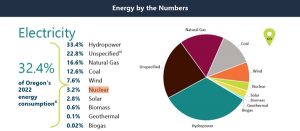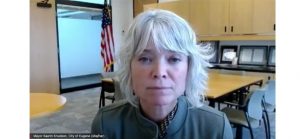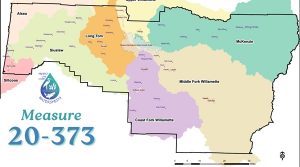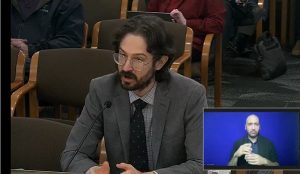Top stories of 2022: Flipping the NIMBY narrative, neighborhoods support shelter
7 min read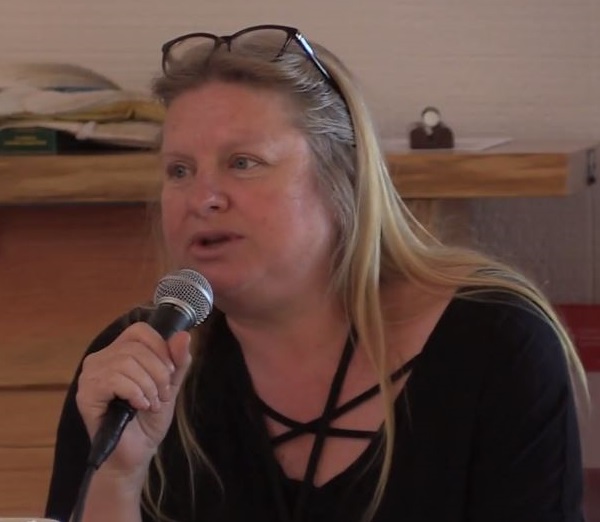
The leader behind one of the year’s shelter success stories offered some lessons learned. She spoke in April at the University of Oregon, and in August at the New Era Convergence.
[00:00:10] Heather Sielicki: When it comes to housing, I ended up coming to it as an accidental activist.
[00:00:15] I moved to Oregon from Florida where we had frequent disasters from serial killers to hurricanes every summer. And I was always interested in that. When I moved to Oregon, I became a member of the Community Emergency Response Team, where for however many weeks we learned what to do if Cascadia or some other devastating event happened.
[00:00:41] And at the time I was living in a neighborhood whose neighborhood association was really more focused on preserving its character by not growing and not changing. And I ended up challenging that and taking over the association.
[00:00:58] Now I lived in South Eugene and I had a very young daughter at the time and I knew there was something going on in the park, right— the Occupy movement— but I was too busy raising a small child to pay it much attention. And in South Eugene, we didn’t really have a lot of unhoused people showing up.
[00:01:15] But one day we did. I got a call from River Road Neighborhood Association and they said, ‘Okay. You are it.’ And I said, ‘What do you mean, I’m it?’ And he said, ‘There’s a protest camp that just left our neighborhood and moved into yours.’ And so I went there to meet the people and try to understand, you know, why are there people who don’t have housing that have just moved into a vacant parcel?
[00:01:38] And it really led to just my interest in trying to deal with the housing crisis over the next 10 years.
[00:01:45] John Q: At that time, the only place to sleep was the Eugene Mission.
[00:01:50] Heather Sielicki: Back then there was no public shelter. There was just a Christian mission shelter. And I started working with the folks in the religious organizations to find out what was going on. And I found that a lot of them were just trying to keep people alive, and on a long road of sort of trying to help people and then they would get swept by the police and then trying to help them get into another place, basically hiding them.
[00:02:20] So I went into this professionally. I went to work at White Bird Clinic and working with CAHOOTS and seeing what they were doing. And found out they were doing the same thing. I mean, where’s CAHOOTS going to take people? 60% of their calls are just transport. And without shelter, they’re helping people hide in bushes too. So I finally had to go and get involved with shelter to see what was going on. And why is it so hard to implement shelter? And boy, is that ever a difficult thing,
[00:02:49] John Q: Heather said she got excellent advice and started convening small conversations.
[00:02:54] Heather Sielicki: I was trying to wrap my mind around everything, and I was lucky to meet with someone who had just started Community Supported Shelters—Erik (de Buhr)—we went to coffee together and I said, ‘What is going on and how do you help people to see the depth of this problem, the scale, and the scope?’
[00:03:13] And what he advised me is that small conversations with people is really the way to do it. And I took his advice to heart because one of the things I learned pretty quickly is: Shaming people into understanding the issue didn’t work. Trying to get people to be more compassionate, to understand the issue, it didn’t work.
[00:03:33] So having small conversations, I found, did. We ended up getting four neighborhood associations to join together and we started something called the Vulnerable Populations Working Group, and we set a goal of trying to find at least 40 units of shelter within our boundaries within the year, which was extremely ambitious, but people didn’t realize how ambitious that was at the time.
[00:04:01] This was about 10 years ago and there, there weren’t very many low-barrier shelters out there, I don’t think there were any. And the faith community had really been carrying the burden of trying to help this ostracized population for some time.
[00:04:17] But we still— we would very carefully— our neighborhood association would have meetings where we invited people to talk. We invited people with lived experience who were homeless to be in the room, and we invited providers.
[00:04:32] And we just let people talk. We did not have the conversations very scripted. We tried to create a sense of vulnerability so people could ask their stupid questions. And it really made a difference.
[00:04:46] Eventually we saw ourselves in the role of, as members of this neighborhood association, it’s our job to help find locations where housing for people who are homeless can exist.
[00:04:58] And over the course of about three years, we ended up not just hitting our target of 40, but we actually have 100 units of shelter in the Southeast Neighborhood now. And a lot of that was from those initial conversations and from taking away this idea of ‘the other’: Everybody’s mentally ill, everybody’s alcoholic, whatever that they would throw out there, there would be somebody in the room who could speak a different story of what their experience was or what they had.
[00:05:29] So. It didn’t really solve the problem, right? Because we have 5,000 people who are unsheltered in Lane County, probably more.
[00:05:42] So what do we do? A group formed to try to do housing, but the focus on all these housing movement groups tended to be really dominated by builders and people who have an economical incentive to see housing—not so much to house the people who actually live in the community.
[00:06:02] And I worked with (Eugene) Planning and Development for a while and they were trying to determine, well, what are we going to do in the next 20 years to have enough housing for the people coming? And they didn’t factor in things like climate change or the amount of people who were living unhoused already. It’s like they didn’t want to see it.
[00:06:22] It was hard to really find a place in the housing movement for me because I really started to feel that a lot of the reason people didn’t have housing is because they didn’t want to live in this society. There aren’t jobs for everyone. I mean, many of us don’t want to live the way we’re living and there’s just no alternatives, and the only honest way is to stay on the street.
[00:06:44] And I was learning that really what bothered people the most—homeowners anyway—was the aesthetics of homelessness. It was ugly, right? There were no garbage cans, so people have their garbage all over the place. It wasn’t a matter of trying to help people.
[00:07:00] So I realized, we’ve got to figure out a way to draw everybody in, even though they may not actually care about this issue.
[00:07:07] So I spent the last two years working on a intentional planned unit development shelter community. It was more than just a place to warehouse people. I wanted it to be something where there was going to be an income source. So we were going to do a mushroom farm and have that be a central hub, so we’d be growing the mushrooms and then we’d have spokes—small communities—that would be places that could sell the mushrooms.
[00:07:36] We also talked about waste generation. Bring in Oregon Bottle Drop and having folks who were canners live there and they’d have the ability to also take cans from other gleaners in the neighborhood.
[00:07:48] It was a lot to take on in a short period of time. And one of the biggest challenges we ran into is in such a stressful environment as helping people who have experienced extreme trauma, you go into crisis mode.
[00:08:01] John Q: Heather said our homeless response demonstrates a systems failure.
[00:08:05] Heather Sielicki: What I really have found in working with a lot of unsheltered homeless people is that they have tried to get help so many times but because our systems are so shoddy, they have been failed over and over again. Government like the city and the county haven’t really ever worked together well on this.
[00:08:29] What I’ve noticed is: This is a systems collapse, all kinds of things breaking down at once. And we keep trying to solve it with individual blocks and it will never be solved that way. We have to work together.
[00:08:44] As the system has failed and created this housing crisis, one thing I’ve learned is a lot of people associate homelessness with crime, but actually it’s because, a lot of homeless people, they can’t work. It’s really hard when you have no transportation, you can’t shower, you have no way to store your possessions. It’s really hard. Why would you expect someone to work?
[00:09:04] There’s people on the streets right now, living unsheltered. And they’re not going to have a place to live anytime soon, right? We’re 20,000 units short on affordable housing for the people who are living here now.
[00:09:17] So it’s time for us all to understand this. Everybody who’s out there, they’re part of our community. And if we want to be an inclusive place to live, then it’s time for us to really work together and take this seriously.
[00:09:31] John Q: One of our top stories of 2022: Heather Sielicki flips the NIMBY narrative. Starting with her neighborhood association, an activist helps create community-supported shelter, and one of Eugene’s housing success stories, Everyone Village.
[00:09:45] Heather’s latest project: The city should permit an accessory dwelling unit for micro-business—the Accessory Commercial Unit.
